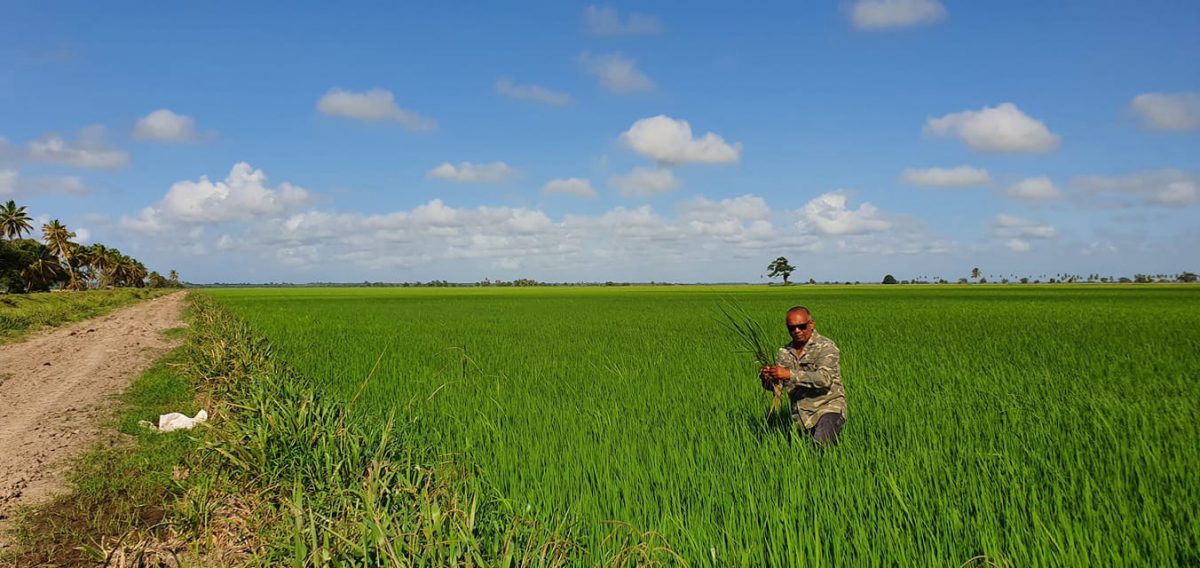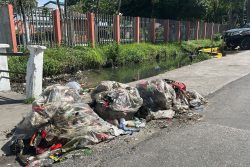Unsurprisingly, the future of Guyana’s traditional agricultural economy in the wake of the emergence of oil & gas and the fanciful futuristic dreams that have attended a projected economic explosion, has, up until now, attracted a great deal less than the level of public discourse that it perhaps merits. This, notwithstanding the unpalatable precedents of developing countries (Nigeria being perhaps the primary example), where the agriculture sector has been significantly downsized or set aside altogether under pressure from the alternative ‘prospects’ that petro dollars have held out.
True, in the instance of Guyana, the rice industry still holds sway as a leading light in the country’s agriculture sector while the fruit and vegetable cultivation continues to be the trademark of Guyana’s credentials as the region’s most food-secure nation. For the time being, therefore, the unspoken assumption still prevails that even the prospect of untold oil wealth is unlikely to shift particularly, the country’s traditional farming families that are the biggest investors in the agriculture sector, from the land.
The reality is, however, that the jury may still be out on that issue. An examination of local media coverage of the prospects of a full-blown oil & gas economy over the next decade and a half on the one hand, and the likelihood or otherwise of local farmers turning their backs on the land makes it difficult at this stage to arrive at unequivocal conclusions. What is clear, however, is that having now been bitten by the ‘oil & gas bug,’ the presumed prospects located in an oil & gas economy have appeared enticing. Against this coconut water, oleo-chemicals, foods and coir, through stabilised value chains for a range of products, so that in the long term Guyana should be leading the coconut industries of the rest of the Caribbean into developing a Caribbean Association of Coconut Industry Stakeholders with strongly defined links to similar associations in the Western and Eastern hemispheres, playing a key role in developing a World Coconut Industry that demonstrates economic and social transformation through agricultural investments.
Progress and Constraints
Achievement of these objectives is heavily dependent on the principle of forming Alliances for Action (A4A), a coherence of efforts involving both private and public sector parties in meeting challenges faced in executing the Guyana Roadmap.
The first three years of the CIDC project focussed on a Baseline Survey and Characterization Study of Coconut Farmers which led to an effort at organising the Production Base of Guyana’s Coconut Value Chain through establishment of Lead Farmers for training in a variety of areas with an anticipated ripple effect for disseminating knowledge. Training touched on areas of production, processing, and marketing and included:
● Lean management of processing operations
● Coconut development: husbandry practices, seed nut selection & multiplication
● Integrated pest management
● Marketing
● Business development
● Packaging of coconut water
● Value addition and food safety
Over 200 farmers and agro-SMEs were trained with inputs and support from CARDI, National Agricultural Research and Extension institute (NAREI), Guyana Marketing Corporation (GMC), Institute of Private Enterprise Development (IPED), Guyana School of Agriculture (GSA), and private consultants.
Inter-cropping coconuts with both cash and orchard crops was supported and introduced for economic and climate risk mitigation. Each of these efforts signify lines of action that need to be intensified and developed to achieve greater impact. An evaluation of the project’s first phase in Guyana revealed areas of both strengths and weaknesses in A4A’s efforts to develop the industry.
From a list of 26 farmers, for instance, 12 were selected ranging in age from 22 to 60 years. Each Lead Farmer was required to select topics that resulted in the list above and were expected to:
● Inspire at least 10 associate farmers to adopt new or better farming practices;
● Create a ripple or multiplier effect that would stabilise production through better practices;
● Become models for adoption of new practices or dissemination of knowledge
Expectations were based on underlying assumptions such as:
● Support institutions equipped to generate and facilitate adoption of practices;
● Credit institutions designed to enable agricultural development;
● Policies that would support and empower agricultural development;
Main deficiencies revealed during the evaluation
included:
1. Issues of land tenure
2. Conditionalities attached to accessing credit
3. Policy issues
Absorptive Capacity
These have constrained the absorptive capacity of beneficiaries’ ability to implement knowledge from training. In terms of land tenure, for instance, improvements in production and income are usually tied to issues of size, type of tenure, and collateral value. With size varying from 8 to 700 acres among the lead farmers, 33% have issues with land tenure, all of whom are among 75 per cent who have challenges meeting the conditionality required to access capital from credit institutions. The two main inhibiting factors are the high cost of credit and inability to offer fixed collateral, which is usually taken as land.
Even so, it is worth noting that collectively the group invested a total of $687,254,000 over the 4-year period in review, ranging from a smallholder’s $295,000 to a large estate owner’s claim of investing US$3 million in developing an entire value chain. Outside of these is the Precision Group’s investment of about US$11 million in a virgin coconut oil factory requiring a minimum of 40,000 dry nuts per day for economic sustainability. This operation runs the risk of fragmentation of supplies from smallholders who also sell to export traders offering a competitive price. Figures from GMC indicate a peak in this trade of just over 11 metric tonnes (MT) in 2014, with an average of about 8MT/year thereafter up to 2018. The CIDC project has identified this fragmentation as a major obstacle to development of Guyana’s industry and has sought to address it by targeting small holder development, but policy issues are an overriding factor affecting performance and absorptive capacity of what the project has to offer. Some critical areas that need to be addressed include:
1) Financing of individual small holder business plans
2) Allowing a grace period of 3 years for growth ofsmall holder businesses before enforcing tax regulations
3) Establishing central processing facilities as models for standardised production and training
4) Infrastructural development of lands
5) Designing credit schemes based on risk management rather than risk aversion
6) Instituting an effective grant scheme based on merit Addressing the Issues
It is in this context that a core of producers and processors have sought to form the Guyana Coconut Industry Developers Cooperative Society Limited (GCIDCO). A special Concept Note was formulated to accommodate the needs and concerns of diverse members of the NSP before the application was submitted and processed. Membership is open to the whole country thus extending the sphere of the project’s 3 pilot zones (in Regions 2, 4/5, and 10). The organisation is now awaiting final approval of its Rules before expanding membership and will be open to enterprises engaged in Guyana’s coconut value chain. Its specific objectives include the strategic objectives listed in the GUYANA COCONUT ROADMAP.
Initiatives taken by GCIDCO so far include:
● Engagement with Precision to assist in meeting its daily demand
● Working on Coconut Waste Management in collaboration with CARDI and NAREI – converting residues from Coconut Water and Oil enterprises into value-added products such as green fibre and bio char for soil amelioration and possibly air and water filtration. [Economic feasibility of scaling these up to industrial levels depend on finding alternative energy solutions]
● Collaborating with the University of Guyana’s Research, Innovation, and Enterprise Endowment Committee to work in three areas with Coconuts, namely: Waste Management; Agronomy and Plant Propagation technologies; and Food Product Development
Other areas of challenge that require a wider collaborative effort include:
● Extensive plant propagation to meet increasing demands beyond the capacity of current nursery production thus requiring commercial tissue culture production of seedlings. [With about 30,000 new acres projected for investments on the Coastal Belt this would require an estimated 2,000,000 seedlings to be ready at a faster rate of production]
● Reduction of the cost of production of both dry and green nuts to supply increasing markets, including the 40,000 dry nuts per day required by the Precision Group’s factory at Marudi on the Linden/Soesdyke Highway
● Generation of biofuels to reduce the cost of industrialising value-added productions from coconut residues
It is in this context that initiatives like the recent forum on Diversification, Capacity Building and Food Security – reported in the Kaieteur News of February 22, 2020 – are welcome.
The author is a member of the National Stakeholders’ Platform (NSP).










